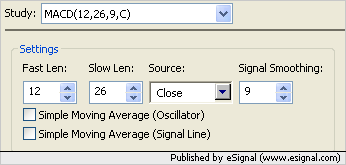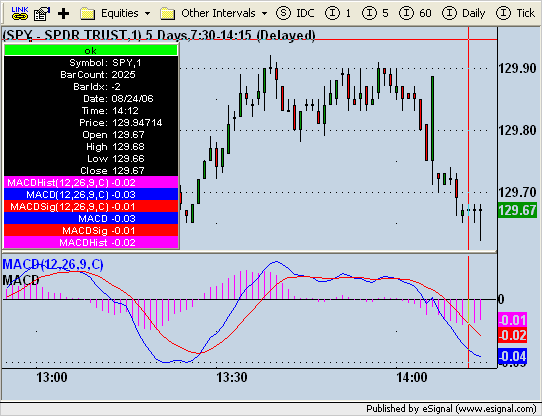I just noticed something working on a clients code.. We were getting different results and I identified what I think might be an issue...
In this example, I've loaded the BASIC STUDIES MACD and the EFS 2 CUSTOM MACD on the same chart with the same settings (as best as I can tell)..
Now, look at the results on the selected bar..
BASIC STUDY:
MACD = -0.001
MACD SIG = -0.003
MACD HIS = 0.001
EFS2
MACD = -0.001
MACD SIG = -0.001
MACD HIS = -0.001
Now, what am I missing here?? What is the difference and are there other differences in other EFS2 indicators?? The EFS2 documentation does not include anything to show me I need to pass a unique value/parameter to the macd().
I'm confused????
In this example, I've loaded the BASIC STUDIES MACD and the EFS 2 CUSTOM MACD on the same chart with the same settings (as best as I can tell)..
Now, look at the results on the selected bar..
BASIC STUDY:
MACD = -0.001
MACD SIG = -0.003
MACD HIS = 0.001
EFS2
MACD = -0.001
MACD SIG = -0.001
MACD HIS = -0.001
Now, what am I missing here?? What is the difference and are there other differences in other EFS2 indicators?? The EFS2 documentation does not include anything to show me I need to pass a unique value/parameter to the macd().
I'm confused????


Comment